Watching some anime on Crunchyroll, Netflix, or another streaming service might occasionally be the greatest way to go to sleep. But which anime is the greatest for drifting off to sleep? In order to avoid being in the wrong mood for bedtime, avoid watching anything that is excessively hilarious, gripping, or terrifying.
From fantasy to action, anime spans many different genres. People adore watching mecha battles and heroes using powerful weapons to vanquish a formidable foe. These make viewers jump out of their chairs and feel their heart race.
Chill Anime To Watch
However, occasionally all individuals want to do is unwind while watching something healthy. As always, Netflix is our only hope in these difficult times. The streaming service has gratefully obtained the rights to a number of feel-good and chilling anime movies; however, Grave of the Fireflies fans are still upset about this.
Here are the top 13 anime movies available on Netflix and Crunchyroll that have been dubbed to chill because of how relatable the characters are, how their plots are, and how they interact with the viewer through dialogue.
1. Barakamon (2014)
The narrative begins with Seishuu Handa punching that older man you saw when he insults his calligraphy. His father advises him to take a leave and go to another country so he may continue working on his calligraphy while he is away from the public eye after such a debacle. Here, he meets many people who enthusiastically greet him and with whom he connects friendships.
It’s important to note that the show doesn’t downplay the fact that he punched the director; rather, it brings it up again in a way that feels natural and authentic. I believe that this feeling of connection to others is what I enjoy most about this program. Every character feels important and genuine, and you definitely get a sense of their brotherhood and camaraderie.
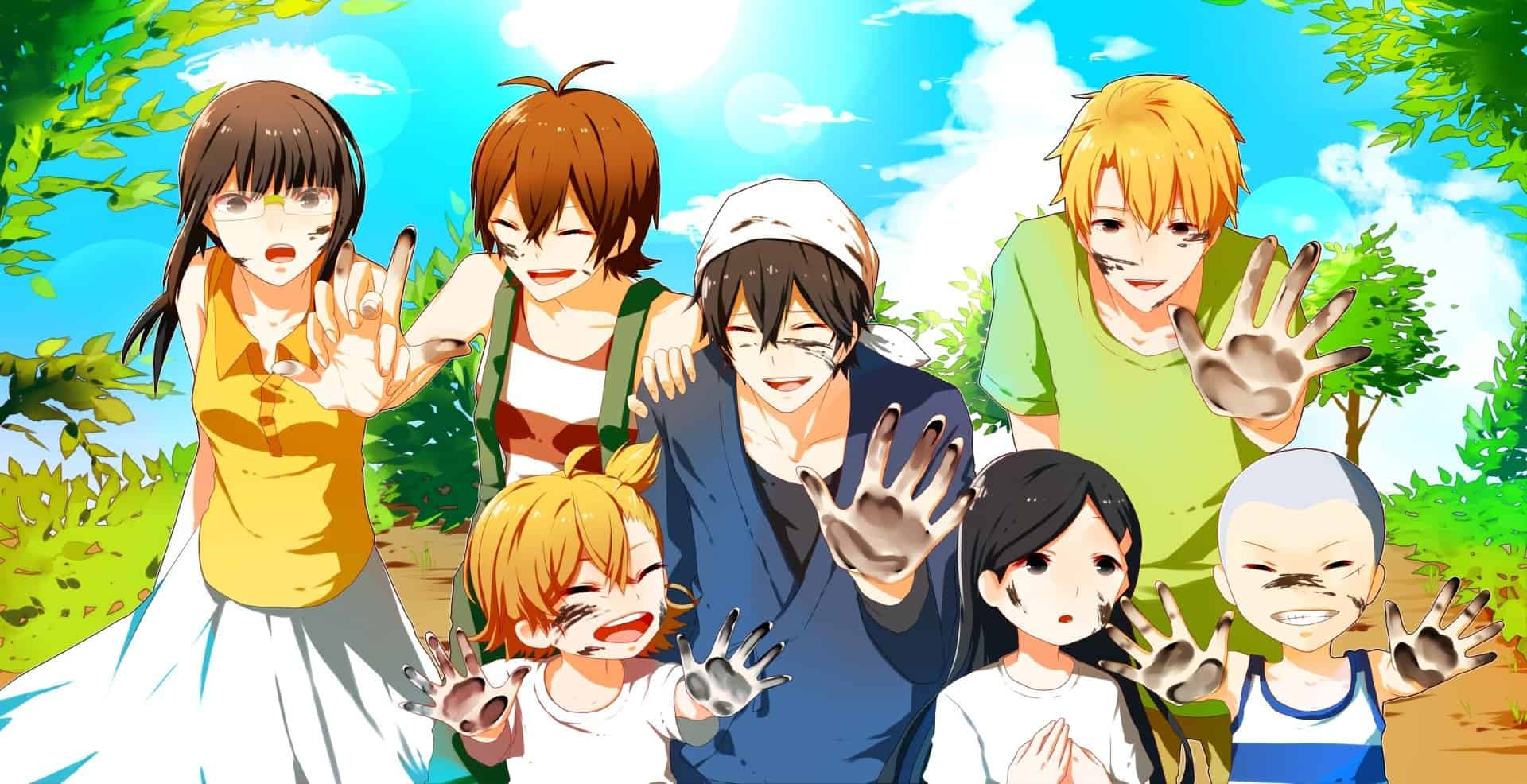
For instance, Seishuu needs to unpack his belongings in the first episode, but he has a lot of stuff. The entire neighborhood turns up to provide a hand without ever being asked, and to them, it’s nothing. The few stills that follow offer me a stronger sense of camaraderie than most programs do in a whole season, yet this show is full of those kinds of scenes.
The idea of a city guy seeking self-discovery in the countryside is by no means novel, and it has been overdone in movies in especially. However, one aspect of this program that I found appealing was the usage of calligraphy.
It really opened my eyes to a new world of art, and you don’t often hear about it, at least not in North America. It’s nice that the animation and calligraphy art are both beautiful since it wouldn’t be useful if the calligraphy, which is meant to be done by a master, looked ‘ordinary’.
Also Read: Barakamon Anime Watch Order: Movies & TV Series
2. Mushi-shi (2005)
Mushi-shi must, of course, be the subject of my very first review of an entire anime series for this site. It is one of just two anime that I have awarded a perfect score, and because I loved it, I titled this site after it. Everything about it works is really fine, whether it’s the storyline, animation, music, characters, or background landscape.
The manga was published in 2005 and has garnered several accolades. The manga has been running for nine years, which is an accomplishment given that many comics are canceled after only one week. What makes it so unique, then?

The anime falls under the category of Seinen, and it tackles the mysterious at a slice-of-life pacing with a dash of horror. The animators did a great job bringing this distinctive combination to life. Despite the complex subject matter, each episode leaves the spectator with a sense of serenity, tranquillity, and quiet astonishment. The plot and idea are original, and the characters touch your heart.
This fits in seamlessly with the plot of Mushishi, which is an ancient Japan when yukatas were still worn on a daily basis, and Western clothing had not yet been introduced. The Mushi are seen hanging out together, and we seldom see any of them by themselves.
Also Read: 10 Unpopular Anime to Watch [Updated 2023]
3. Hyouka (2012)
Hyouka strives so hard to be a mystery-themed anime that I had to classify it as such. It’s a lovely, charming slice-of-life anime that strives to break away from the traditional ways of being a slice-of-life anime and try something new.
I’ll get to the topic of whether it succeeds or fails shortly, but for the moment, I have to commend them for making an effort to keep this anime unresolved anime and adhering to its rules throughout the whole production. The mystery-of-the-week-style program Hyouka tackles situations that often take two or three episodes to solve.
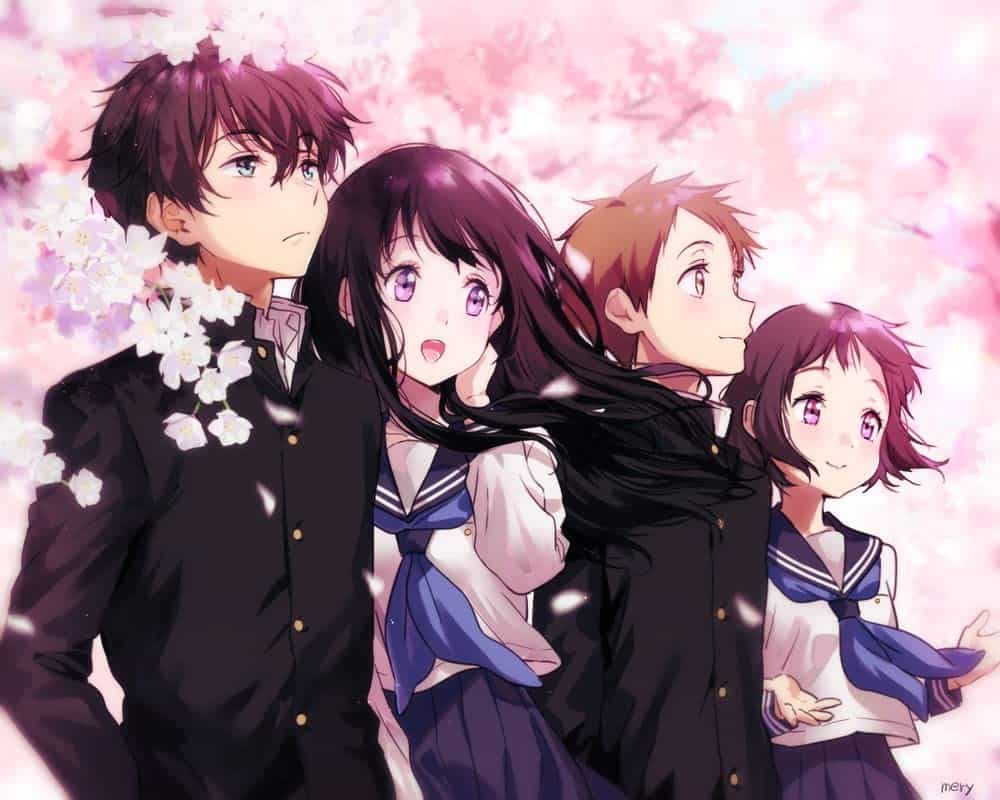
But this series adheres to specific rules. Instead of being detectives, police officers, or even adults, as in other mystery anime, the main characters in this one are high school kids (hello, Japan). Not that matters much because the mystery that the episode centers on may be one of the best instances of how to successfully solve a mystery without resorting to violence.
Yes, the series is a mystery series. However, it mostly deals with mysteries rather than violent, murderous, supernatural, or haunting situations. Meet our main character. High school student Houtaro Oreki, who is notoriously lethargic, has even coined a phrase for it: energy conservation.
I’ve never really understood what he meant by that; for example, why bother saving energy when all he does is go to school and hang around at home? He performs all of the activities that high school students would perform, so why bother saving energy? The character does not stand out because he is a slacker or anything like that. Oreki stands out since he is apparently the series’ main detective.
Also Read: 10 Must-Watch Anime Like Hyouka
4. Tanaka Kun Is Always Listless (2016)
This humorous, slice-of-life animation centers on Tanaka, a high school student noted for his extreme apathy about everything. In fact, he is so lazy that he goes out of his way to avoid any situation that would possibly require him to stop being sluggish. He is weak and lethargic, the epitome of a lazy bum.
He is fortunate to have his friend Ohta by his side to help out whenever necessary. This would apply to scenarios like when Tanaka does off during lunch and sleeping even after the bell sounds. Despite Tanaka’s extreme laziness, everything works out well for him. However, his carefree, tranquil high school existence is disturbed when.
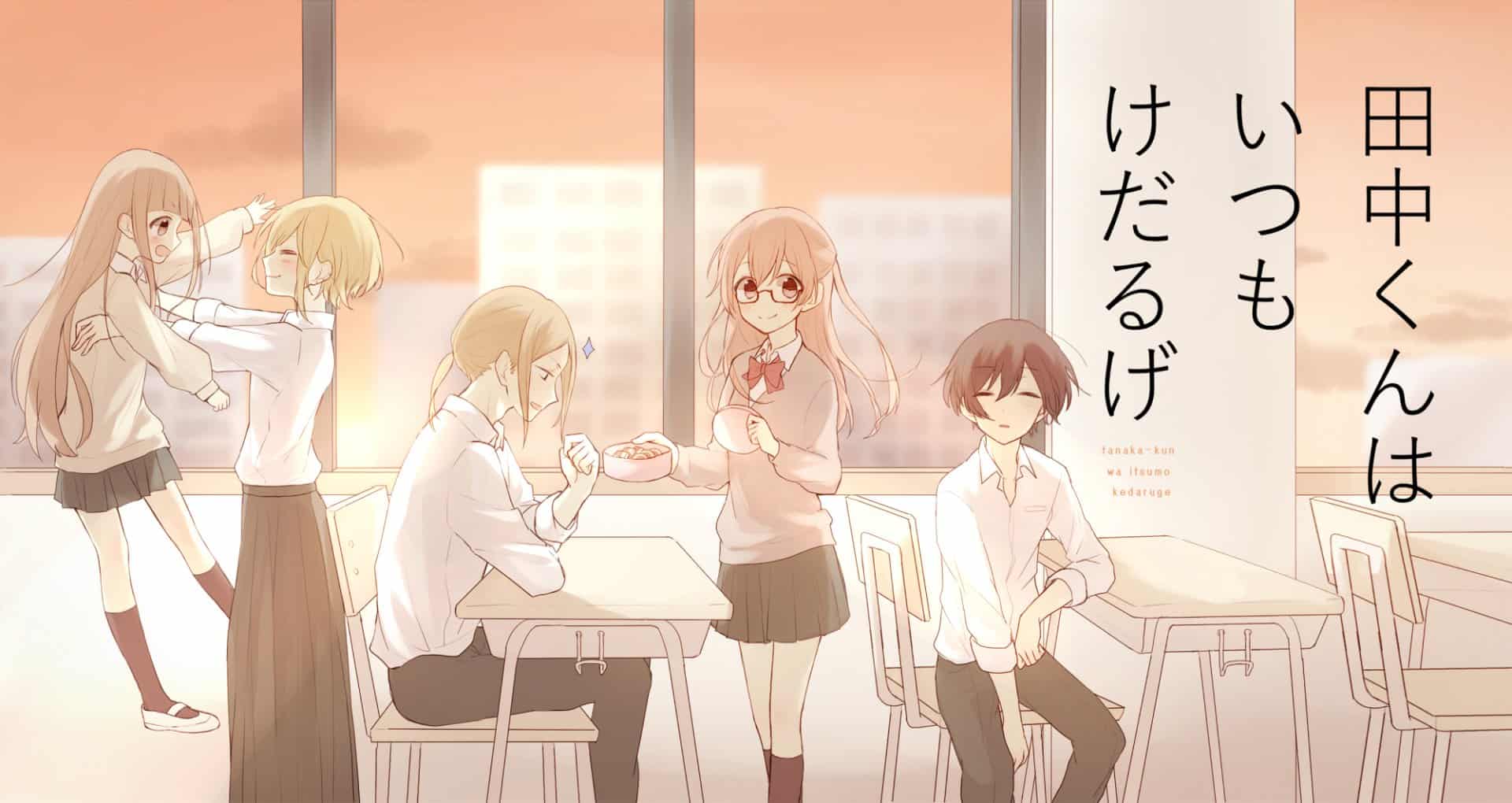
High school has frequently been presented in anime as this magical location where miracles take to transpire. High school is where things happen, whether it’s falling in love, joining a sports team and winning championships, or even dispelling a continuous untruth about the group. Takayuki Itsumo Kedaruge presents us with a high school where nothing really occurs, providing a stark contrast to the anime high school.
Sure, there were and are customary events like festivals, but nothing spectacular like other programs. By the completion of the day, not much really happens that is noteworthy. The authors also saw this pattern and gently slipped in a few meta-commentaries on relevant topics. The characters give the series its color and vibrancy. If the location of the program is the canvas, the characters are the paint.
Tanaka will be sky blue, Ohta will provide green tones, and the rest of the actors, who will be presented later in the program, will add more and more color to the scene. The first few episodes of the show might seem sort of monotonous and uninteresting, but at the conclusion of the twelfth episode, you will witness the finished product: a vivid landscape painting with a serene sky and rich, brilliant meadows.
Also Read: Who does Tanaka end up with in ‘Tanaka-kun Is Always Listless’?
5. March Comes In Like A Lion (2007)
Rei Kiriyama, a stoic 17-year-old who lives alone in a studio apartment, is emotionally repressed. He is a prodigy in his field and an established shogi player. However, this is an anime containing shogi rather than one about it. Rei’s history, relationships with his shogi opponents, the Kawamoto sisters, whose home is essentially a second home to him, and his interactions with them are all explored in some detail in the first release of the anime.
Even though the show’s second half is more narrative- and drama-focused, the anime still continues to keep it concerning Rei and his character growth. March Comes in Like a Lion’s character writing through visual narrative is, as one might expect, rather bombastic. This isn’t a terrible thing at all because the program handled them with charm and good bonding in the first half.
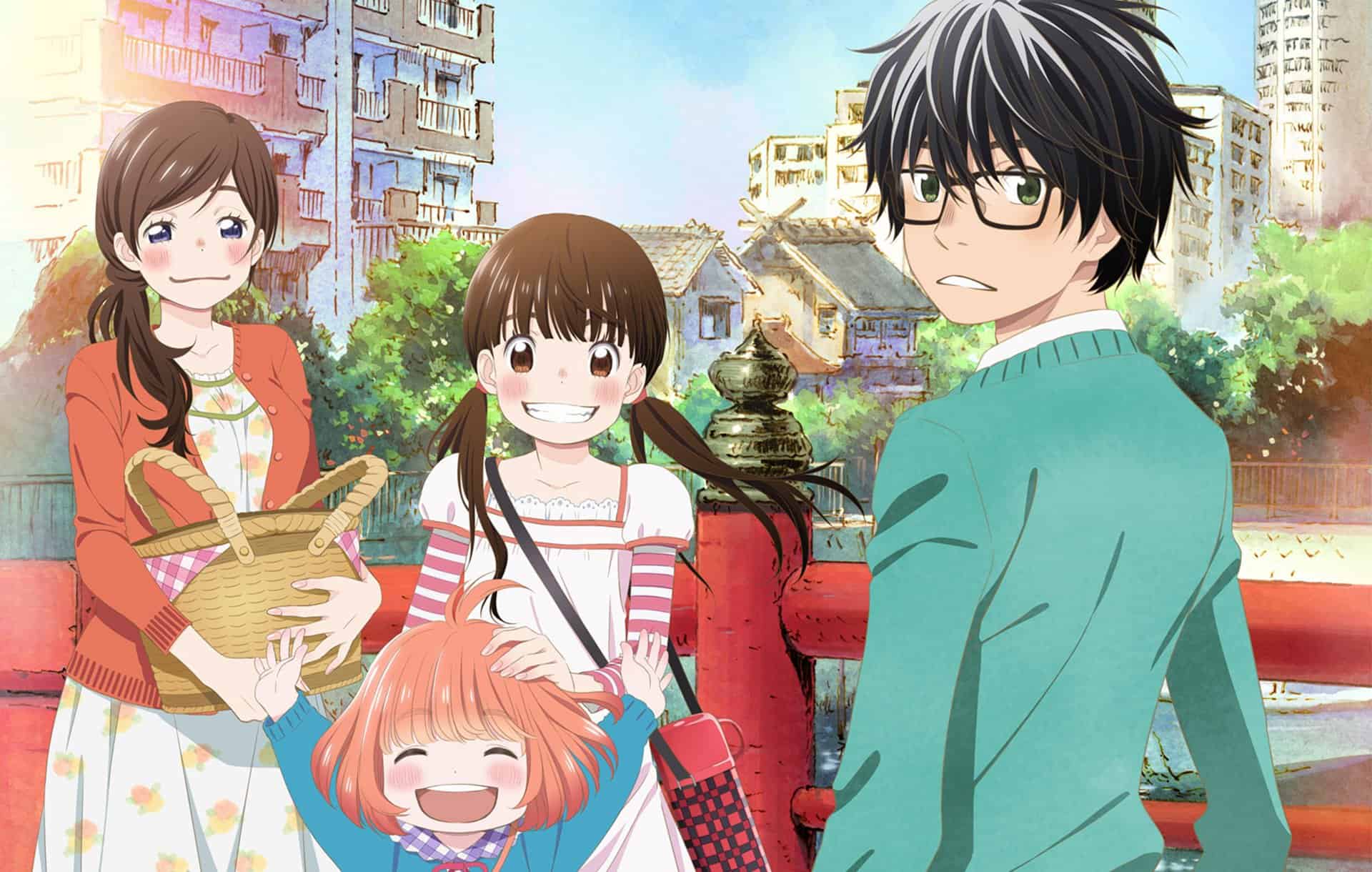
Because there aren’t many story points to explore in this show’s writing and the protagonist is reserved, there isn’t a lot of two-sided discussion in the screenplay. In fact, Rei rarely spoke at all for the whole of the first episode, and the production fetishized the scene with bubbles, blue and black, harsh lighting, and a warm pastel color scheme.
However, that does not mean that the series is as quiet as Serial Experiments Lain, where Lain had a limited inner monologue, and the entire ensemble barely ever spoke. Rei isn’t a hollow character; he speaks a lot, as one would expect from an introspective character, but he seldom comes off as unduly pretentious.
In part due to the voice actor’s honest performance and, once more, to the visual direction. In this program, character writing by Umino Chika that humanizes characters flourishes—Rei doesn’t recount every action he does, he doesn’t become overly self-absorbed, and he occasionally engages in light-hearted comedy routines.
Also Read: 12 Vintage Anime To Watch in 2023
6. Windy Tales (2004)
Windy Tales is a mixture of emotions for the sensitive audience Slice-of-Life subgenres. It adheres to the premise of a group of girls finding a magical realm in which they play a key part, but on the other hand, the story is entirely motivated by the desire to understand how they live every day rather than putting their efforts into keeping their family safe.
In spite of the supernatural designating the plot as fantasy, the characters still have to deal with the same problems in our life too. The ease of the supernatural serves to support this. It is not an invading force that alters or differs from reality.

Although it seems that some portion of the series is haunted in a funny way, it still manages to attract the audience. Windy Tales tries harder than other similar shows to make the supernatural part of everyday life. There are no spectacular extra-terrestrial creatures or malicious magic spells involved in the “Wind-Manipulation,” the “Flying Cats,” or Taiki’s village’s enigmatic objective.
The most peculiar aspect of the supernatural aspect of Windy Tales is not how bizarre Wind Manipulation is, but instead, being how it is. In this anime, seeing a flying cat is not cause for astonishment, alarm, or disbelief; rather, it is – accepted. It’s similar to viewing amazing natural occurrences, like the aurora borealis.
Even while it may seem weird, no one would ever suppose it to be impossible or refuse to accept their own eyes. Of course, one could question why, to which the show would respond by saying that particular cats can fly because they are considered Wind-Users. However, if one asked why again, the show would have no response. Wind-Manipulation is entirely empirically normal. There you have it; some people can pull it off.
Also Read: 9 Anime Like Make My Day
7. Hakumei and Mikochi (2018)
The plot of Hakumei and Mikochi is bookended with parables, historical facts, and fleeting remarks that innocently disappear into the epilogue. Sometimes they would explain the background of the incident we had just seen. Other times, they would give us little glimpses into the lives of the other characters while we were following the main protagonists.
Simply said, they accomplish what many programs under the slice-of-life umbrella aim for, which is to engage the viewer to experience the world at the show’s own speed. They are charming, humorous, and meaningful. Additionally, Hakumei and Mikochi are quieter, more subdued, and more modest than others.
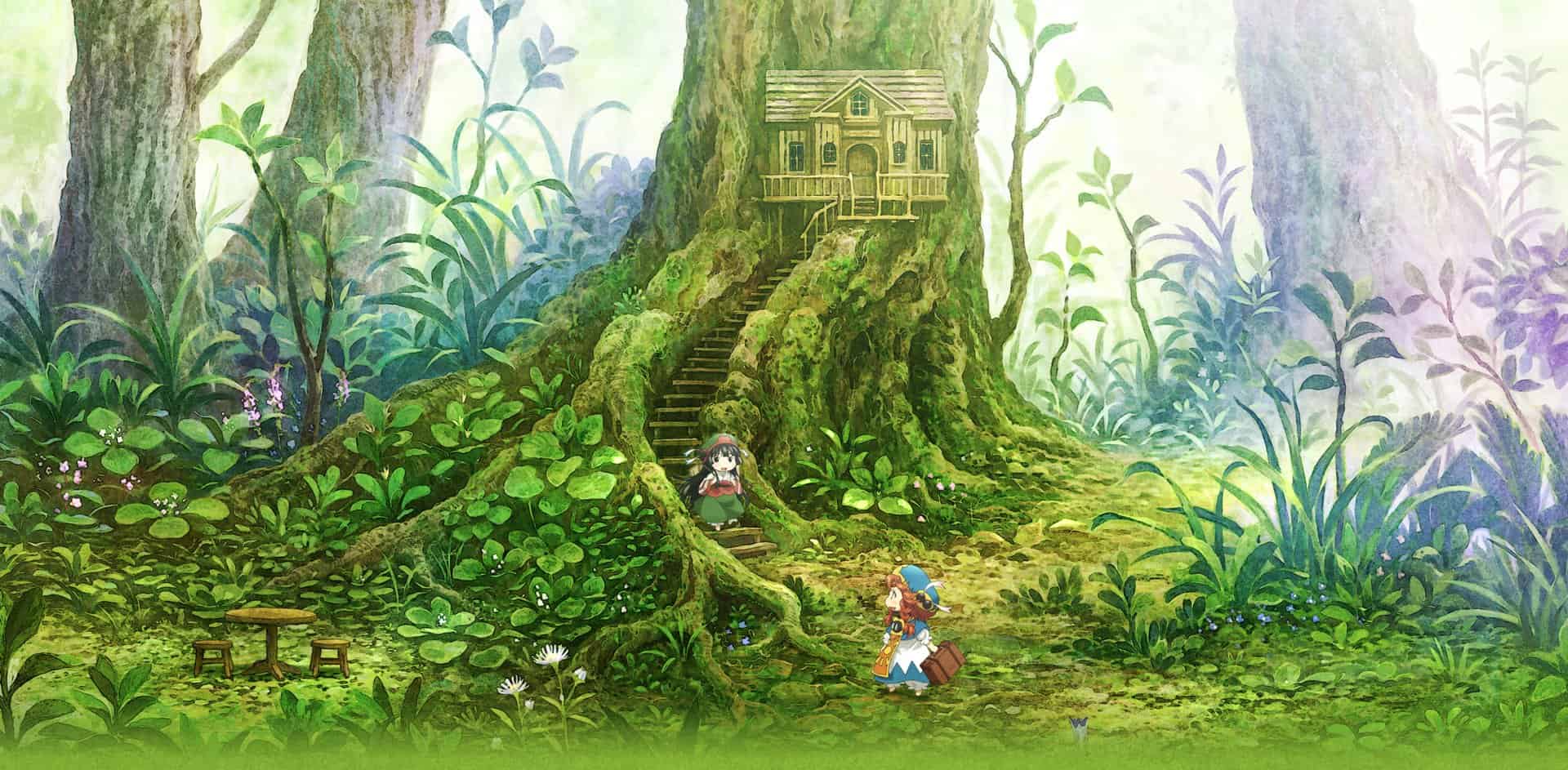
The tempo of the play is set by the unpredictable behavior of the titular people and how, alongside each change in landscape, the interconnected synergy oscillates since the main protagonists spend a lot of their free time in the country. Hakumei and Mikochi were the key characters the drama deserved the most at this point.
Evan Call, the series’ composer, is also deserving of note because he worked on the season’s centerpiece Violet Evergarden. Call opted for an even more intimate musical group with Hakumei and Mikochi, emphasizing a variety of solo woodwind and percussion patterns for a more folk-like listening experience as opposed to the latter’s big palettes of symphonic perfection and chorus’s excess.
Also Read: 10 Anime Like Reincarnated as a Sword To Watch
8. Whisper of the Heart (1995)
Studio Ghibli’s 1995 romantic comedy Whisper to the Heart. Shizuku Tsukishima, a teenage student, is depicted as maturing throughout the story. Shizuku spends her time in the lending library reading books rather than preparing for her secondary school entrance tests.
She discovers that a boy named Seiji Amasawa had previously checked out some of the books she has been reading, which piques her interest. She encounters a cat on the train one day while taking her father’s lunch to the library, and she follows the cat to Shiro Nishi’s (Seiji’s grandfather’s) antique store.
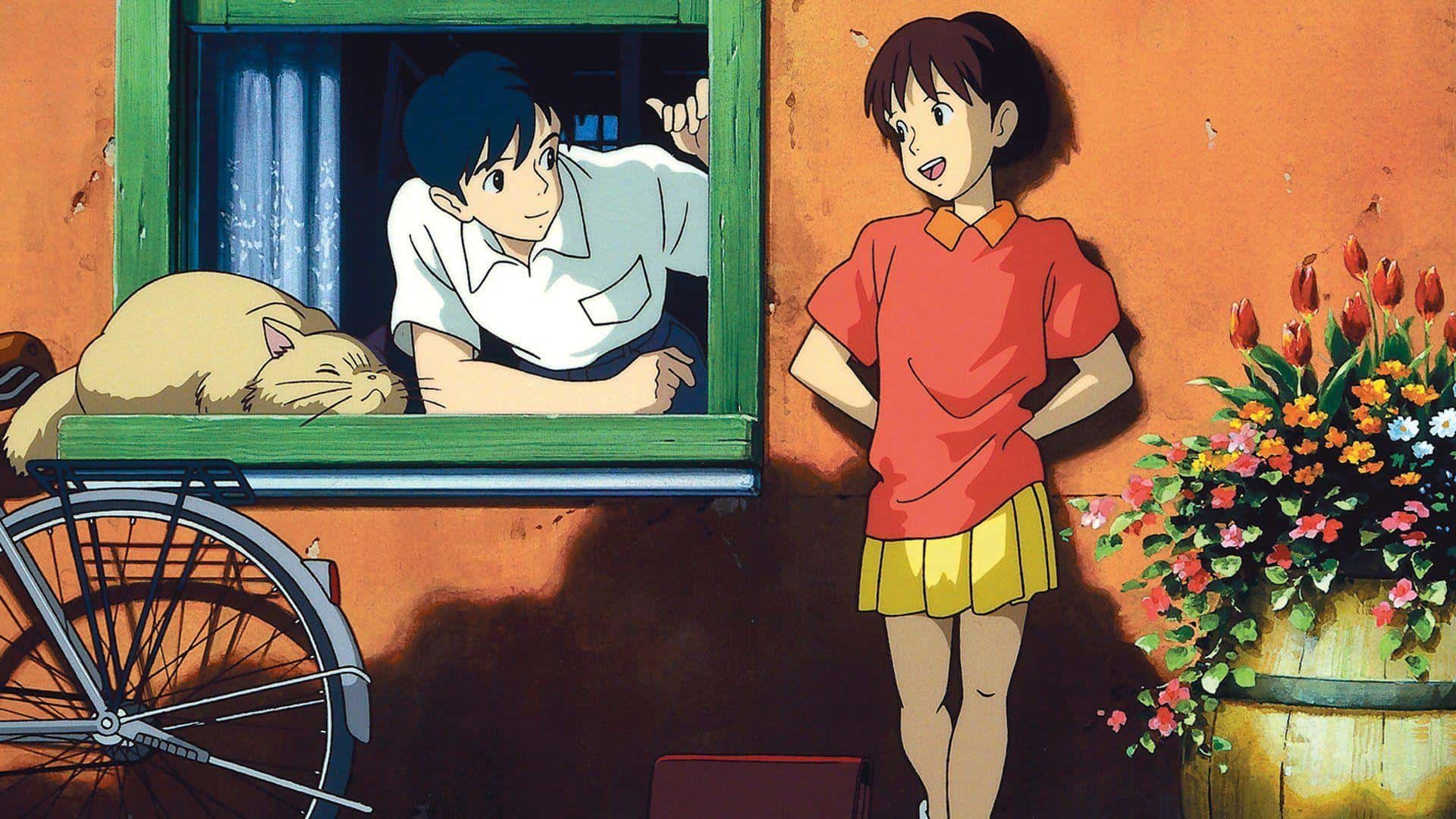
She shows a special interest in The Baron, a monument of Nishi’s cat that serves as the source of inspiration for her book. After getting together with Seiji, Shizuku learns that he is the youngster who taunted her, and it turns out he is also Nishi’s grandson. Seiji informs her that he will be spending a two-month period in Italy to determine if he has what it takes to build violins.
Shizuku sets out to complete a full novel while he is away. Her parents are worried and angry because of her poor grades, but she assures them that it is her life to live whatever she pleases. But after reading the book, he thinks she should go to high school and starts studying.
Seiji takes Shizuku on a bike trip to see the dawn when he gets back. He informs her that they will be classmates in high school. Seiji declares his love for Shizuku and promises that one day they will coexist as writers and violin makers.
Also Read: 21 Shows Like Heartland To Win You Over
9. The Garden of Words (2013)
Makoto Shinkai, who also directed 5 Centimetres Per Second, is the director of the 46-minute movie Garden of Words. The protagonist of the tale is 15-year-old Akizuki Takao, who wants to become a shoemaker. He enjoys skipping school on rainy days in order to visit a garden, which is where he hides in a shelter and creates shoes while admiring the scenery.
He comes upon Yukino Yukari, a woman, one day while she is perched beneath the shelter. They first don’t speak to one another, but when they encounter one another more frequently, they begin to converse and open up to one another.
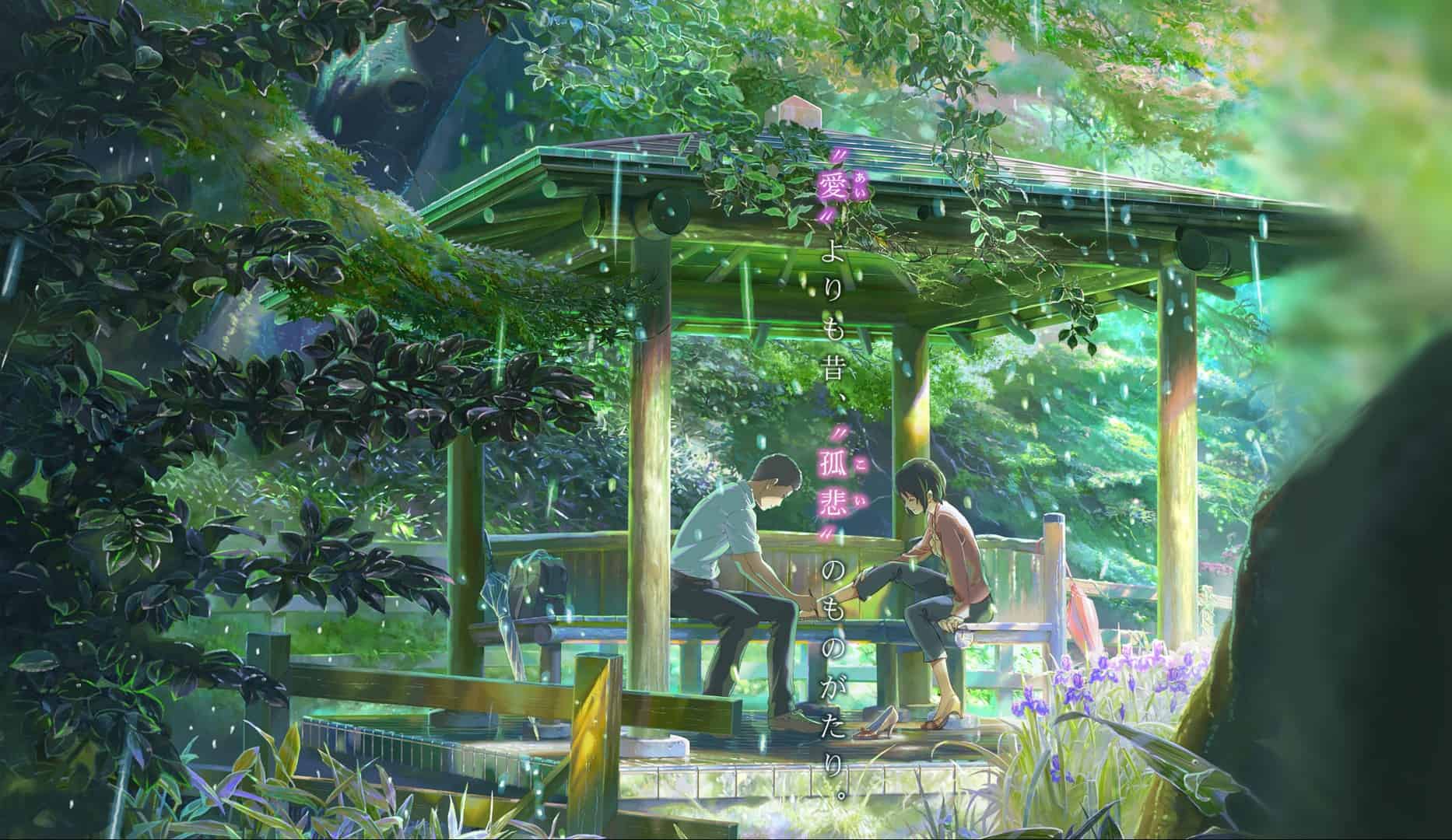
While Yukari offers little information about herself and just claims she is skipping work due to personal issues at work, Takao talks about his aspirations to become a shoemaker and offers to build a pair of shoes for her.
Actually, Takao discovers her name while identity just halfway through the movie. Love and maturity are the two major elements of this tale, and they are interrelated. As they spend more time in a team, each of these characters develops a sense of caring for one another.
The age gap between them, however, makes their connection odd because it is uncommon for an adult and an adolescent to be in a love relationship. The narrative demonstrates that, in contrast to popular belief, people don’t necessarily develop smoothly and flawlessly.
While it is entertaining to observe our two main characters interact, you are forced to believe that the conversation is unidirectional, considering Yukari doesn’t actually say anything. I believe this to be a squandered opportunity.
She even reads a poem aloud during the final meeting in the pouring rain to demonstrate how guarded she is, but this does little to flesh out the character’s lack of background information. Her being more restrained and silent, in my opinion, really takes away from the serene atmosphere that the program creates. The music and pictures create a peaceful, rainy mood that promotes tranquility.
Also Read: Violet Evergarden Watch Order Guide
10. K-ON! (2009)
Many people things K-ON is a controversial and overrated series because of some rumors spread about it lately. Observing the light music club’s everyday activities at school or their live concerts is never boring. The first and second seasons of the series are a straightforward, soothing, and endearing atmosphere.
It didn’t take me long to start up my video player and watch another nearly two hours of sweetness and fluff as soon as the movie’s subtitles were available. It may be dangerous to adapt an anime that is already well-known and has been running for a while.

It’s simple to assume that they are attempting to capitalize on a successful franchise by tricking everyone into purchasing a low-budget movie that does that it is the same as the first series, and this is undoubtedly the case for a number of series. However, the K-ON movie doesn’t, in my opinion, have that vibe.
Once more, K-ON takes a simple concept and basically lets the women go wild with it. The light jazz club is organizing a graduation trip this time, and after much deliberation and difficulty, they were able to travel to one—a journey to the one and only London!
When they eventually left the airport, that was the enjoyable part. Although the girls’ activities at school in Japan were enjoyable, it’s intriguing to watch the girls enjoying themselves somewhere else. Since music is an important component of K-ON, KyoAni never forgets to include a few musical notes throughout the series.
Even if there are some hiccups in their “international” existence, the customers continue to adore it, and I’m convinced the audience members do too. The girls are occasionally forced into some unintentional concerts in London.
Also, Read Anime Similar To K-On! To Watch Right Now
11. Spice and Wolf (2006)
Kraft Lawrence, a 25-year-old traveling salesman with 40-year-old sensibilities, is the main character in Spice &Wolf. He travels from town to town, selling a variety of items in an effort to support himself and, maybe, one day establish himself with a stable business. He finds Holo (Horo in Japanese), a harvest diety, one night in Pasloe town.
Holo is not really a female but rather a harvest deity. The almost 600-year-old pagan deity has wolf-like reddish ears and a tail. Holo wants to travel back to her native region in the far north since the people there no longer honor animal gods after converting to the Church faith, despite the fact that the wolf goddess guards the wheat and ensures a bountiful harvest every year.

Holo, a wise and learned woman, strikes a bargain with Lawrence to accompany him on his journey in exchange for a portion of the crop around her neck. Her knowledge enables the merchant to maximize his earnings as the two travel north, but her actual character attracts unwelcome curiosity from the Church.
Studio Imagin, a modest firm with few programs to its credit, produced Spice & Wolf. This is undoubtedly their best-known piece of art. The character designs, in my view, could use some work, and the models don’t move as naturally as they might. Fortunately, the program’s content encourages a lot of talking, so it typically gets by with just sufficient animation.
Also Read: Top 10 Anime Similar To Spice And Wolf
12. Non Non Biyori (2013)
Several people suggested the program Non-Non Biyori to me after I admired Yuru Camp. A group of pals goes camping in Japan’s picturesque countryside in the television series Yuru Camp. Non-Non Biyori goes a step further by focusing on the people of a location that is much more distant and their routines for passing the time.
Non-Non Biyori is NOT an anime with a plot from the very beginning. It’s as real a slice of life as you can get, focusing more on the residents’ personalities and the attractive rural location. The fact that the series takes its time is a plus.
The audience is given enough time to take in every component of the act, including the comedy, the moving moments of tension, and even just the stunning backdrop scenery. Most of the running time is spent simply watching situations unfold with little to no conversation.
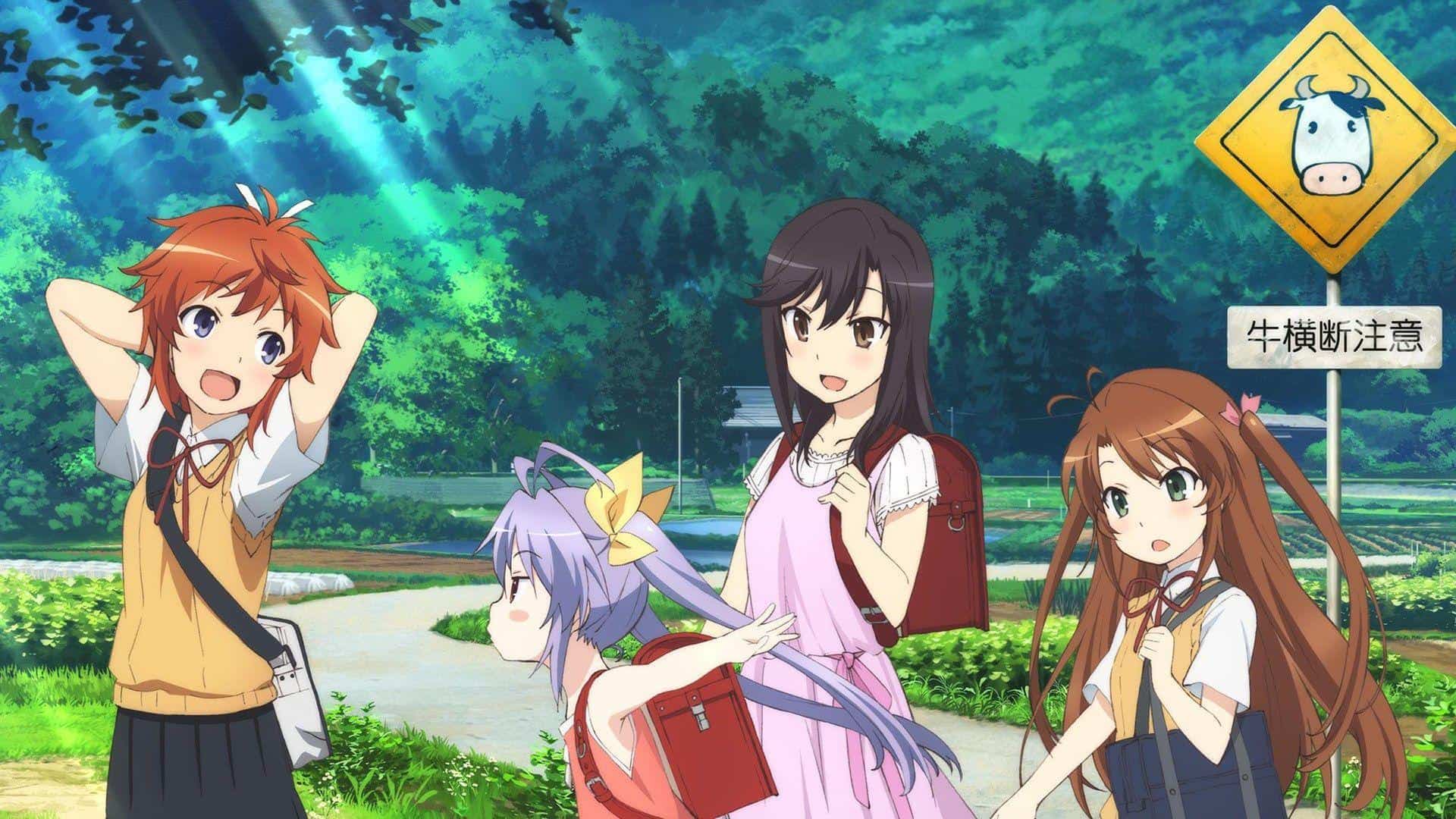
Yes, there are still a lot of people talking, but what gives this series its peaceful atmosphere are the intercut, lengthy silences. The characters in the show have the same light-hearted spirit. Although there isn’t much conflict in the show—most of it is character-specific issues that are handled in the episode—it does make a positive impression when it does.
The majority of the series is humorous, but not in a funny sense. It’s a nicer kind of humor, the kind that makes you laugh throughout the entire show because it’s cute or silly. Most of the dry, odd comedy I like comes from Range.
Also Read: 25 Anime To Binge Watch in June 2023
13. Flying Witch (2016)
The greatest Yashiki (healing) anime ever produced is probably Flying Witch. If you enjoy Aria and Non-Non Biyori, you must watch this series. Because it features fantastical elements but doesn’t depend heavily on them to advance the plot, Flying Witch stands unique.
The way each episode develops naturally and organically sends a very subtle but distinct signal that people—witches or not—are genuinely interconnected with the ground, plants, animals, wind, and sky. There isn’t a clear conflict, no exceptionally funny comedy, and there isn’t even a narrative.

Flying Witch is so intriguing because of this—I have no clue how a whole episode could be devoted to the arrival of spring, going for a few walks, and gathering fresh wildflower blossoms for tempura. The fact that all the characters, including those from the magical realm, are presented in a very realistic way is one aspect that is really welcome.
The program just allows individuals to be themselves rather than depending on bizarre behavior to advance the plot. This is crucial for the character of Chinatsu, a grade-school student and the younger cousin of Makoto, the series’ central witch. It’s really cute to watch Chinatsu’s responses and wonder in the beautiful world.
She acts and behaves as any other little child would, which makes her endearing. Chito, Makoto’s cat and a familiar behaves and moves just like a real cat. Chito has a tendency to be slothful, enjoys making fun of the neighborhood dog, and engages in mysterious adventures that only other cats can fully comprehend.
The fact that only witches can comprehend familiars and that they must then explain them to non-witches in a humorous way. While watching the show, I tried to infer what they were saying.
Also Read: 15 Anime Series Suitable for 15-Year-Olds to Watch




